Agriculture Drones, A Game-Changer for Agriculture & its Benefits for Indian Farmers
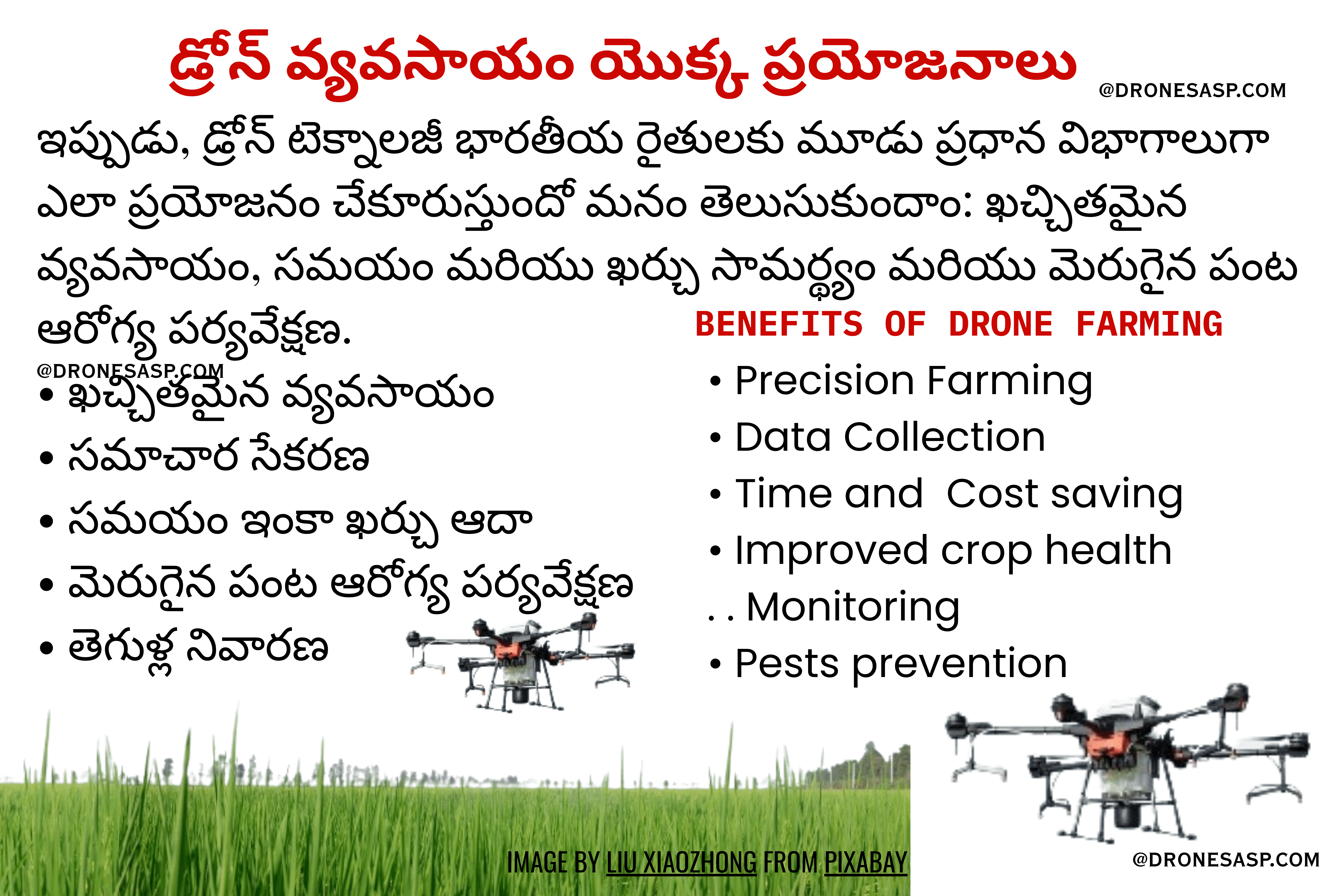
INDIA, being an agrarian economy, heavily depends on agriculture for employment, income, and food security. However, Indian farmers often face numerous challenges such as unpredictable weather, pest attacks, water scarcity, labor shortages, and low productivity. In recent years, technological advancements have paved the way for smart farming methods, and among them, drone technology has emerged as a game-changer. Drones, or unmanned aerial vehicles (UAVs), are revolutionizing the agricultural landscape by making farming more precise, efficient, and sustainable, benefits for indian farmers.
Here we will learn how drone technology is benefiting Indian farmers under three main categories: precision farming, time and cost efficiency, and improved crop health monitoring.
- Precision Farming
- Data Collection
- Time & Cost Efficiency
- Improved crop health Monitoring
- Pest Management
ఇప్పుడు, డ్రోన్ టెక్నాలజీ భారతీయ రైతులకు మూడు ప్రధాన విభాగాలుగా ఎలా ప్రయోజనం చేకూరుస్తుందో మనం తెలుసుకుందాం: ఖచ్చితమైన వ్యవసాయం, సమయం మరియు ఖర్చు సామర్థ్యం మరియు మెరుగైన పంట ఆరోగ్య పర్యవేక్షణ.
• ఖచ్చితమైన వ్యవసాయం
• సమాచార సేకరణ
• సమయం ఇంకా ఖర్చు ఆదా
• మెరుగైన పంట ఆరోగ్య పర్యవేక్షణ
• తెగుళ్ల నివారణ
Watch a short video here – డ్రోన్ వ్యవసాయం యొక్క ప్రయోజనాలు
Precision Farming and Data Collection
One of the biggest advantages of drone technology in agriculture is its ability to support precision farming. Precision farming involves the use of advanced technologies to observe, measure, and respond to crop variability in fields. Drones equipped with high-resolution cameras and sensors can collect accurate data from the fields in real-time.
Using drone surveys, farmers can analyze crop conditions, soil health, and moisture levels. These insights help them make informed decisions on where to apply fertilizers, pesticides, and water, rather than covering the entire field uniformly. This targeted approach not only improves crop yields but also reduces the wastage of inputs, saving money and reducing environmental damage.
“In India, where small and fragmented land holdings are common, drone-based precision farming is especially beneficial. It enables even small-scale farmers to get customized data about their fields, allowing them to optimize their resources and improve productivity.”
Moreover, drones can be used to generate 3D maps of agricultural land, helping in land planning, seed sowing patterns, and water flow management. This is particularly useful in states like Maharashtra and Rajasthan, where water conservation is critical.
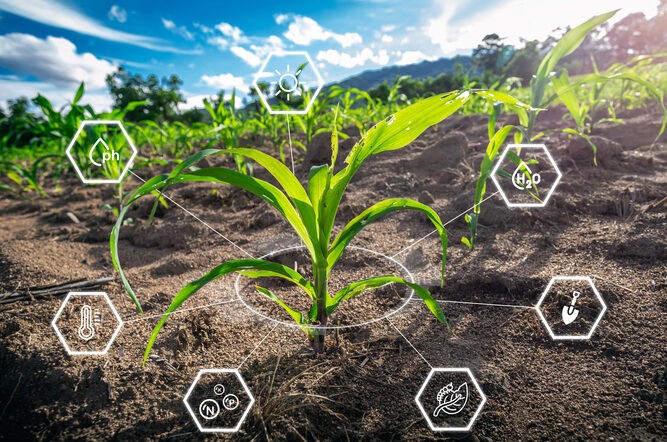
Time and Cost Efficiency
సాంప్రదాయ వ్యవసాయంలో సమస్యలు
• కూలీలు పురుగుమందులను పిచికారీ చేయడం చాలా సమయం తీసుకుంటుంది
• కూలీల ఖర్చులు ఎక్కువగా ఉంటాయి
• గ్రామీణ-పట్టణ వలసల కారణంగా వ్యవసాయ కార్మికుల కొరత
• పంట సీజన్లలో వ్యవసాయ నిర్వహణలో సవాళ్లు
Problems in Traditional Farming
- Manual spraying is time-consuming and inefficient
- High labor costs
- Shortage of farm workers due to rural-urban migration
- Challenges in managing operations during peak seasons
Drones offer a solution to this problem by significantly reducing the time and labor required for routine agricultural tasks. A drone can cover 1–2 acres in less than 10 minutes, whereas manual spraying might take hours. This fast application is crucial during pest outbreaks, where timely action can save an entire crop.
In addition to saving time, drones reduce the cost of farming. While the initial investment in drone technology may seem high, the long-term savings on labor, fuel, and chemical usage make it economically viable. Government initiatives like the Sub-Mission on Agricultural Mechanization (SMAM) are also providing financial support and subsidies to promote the use of drones among farmers.
Furthermore, service-based drone providers are emerging across the country, allowing farmers to rent drones for specific tasks rather than purchasing them outright. This model makes drone services accessible even to marginal farmers.
Improved Crop Monitoring and Pest Management
Improved Crop Monitoring & Pest Management
This technology plays a key role in early detection of crop issues. With multispectral and thermal sensors, drones can spot signs of crop stress, diseases, or pest infestations—helping farmers act quickly and prevent losses.
- Detects issues like locusts or fungal infections early
- Enables targeted spraying, saving chemicals
- Reduces risk to environment and human health
Boosts Efficiency & Profitability
Agriculture Drones are helping farmers in states like Punjab and Haryana monitor paddy fields for diseases and nutrient deficiencies. This reduces excess fertilizer use and protects soil health.
- Tracks crop maturity and predicts yield
- Helps in better harvest planning
- Supports timely access to markets and better profits

Conclusion :
Drone technology is transforming Indian agriculture by making it more Modern, data-driven, and efficient. We can see how it benefits for Indian farmers, It empowers farmers with precise information, saves time and labor, reduces input costs, and enhances crop health monitoring. Though challenges like high initial costs, lack of awareness, and regulatory barriers still exist, ongoing government support and increasing private sector involvement are helping address these issues.
As India aims for agricultural sustainability and food security, integrating drone technology into farming practices is a step in the right direction. For Indian farmers, especially those struggling with traditional methods, drones offer a ray of hope—helping them increase productivity, reduce risks, and ensure better returns for their hard work.
Jai Kisan Jai Jawan Jai Hind
జై కిసాన్ జై జవాన్ జై హింద్
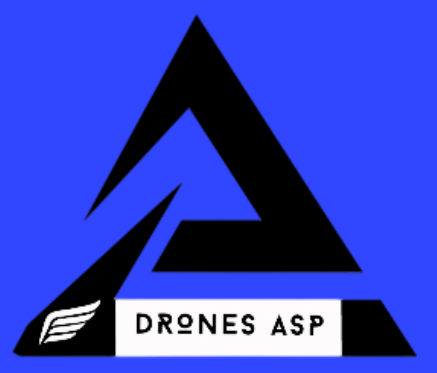
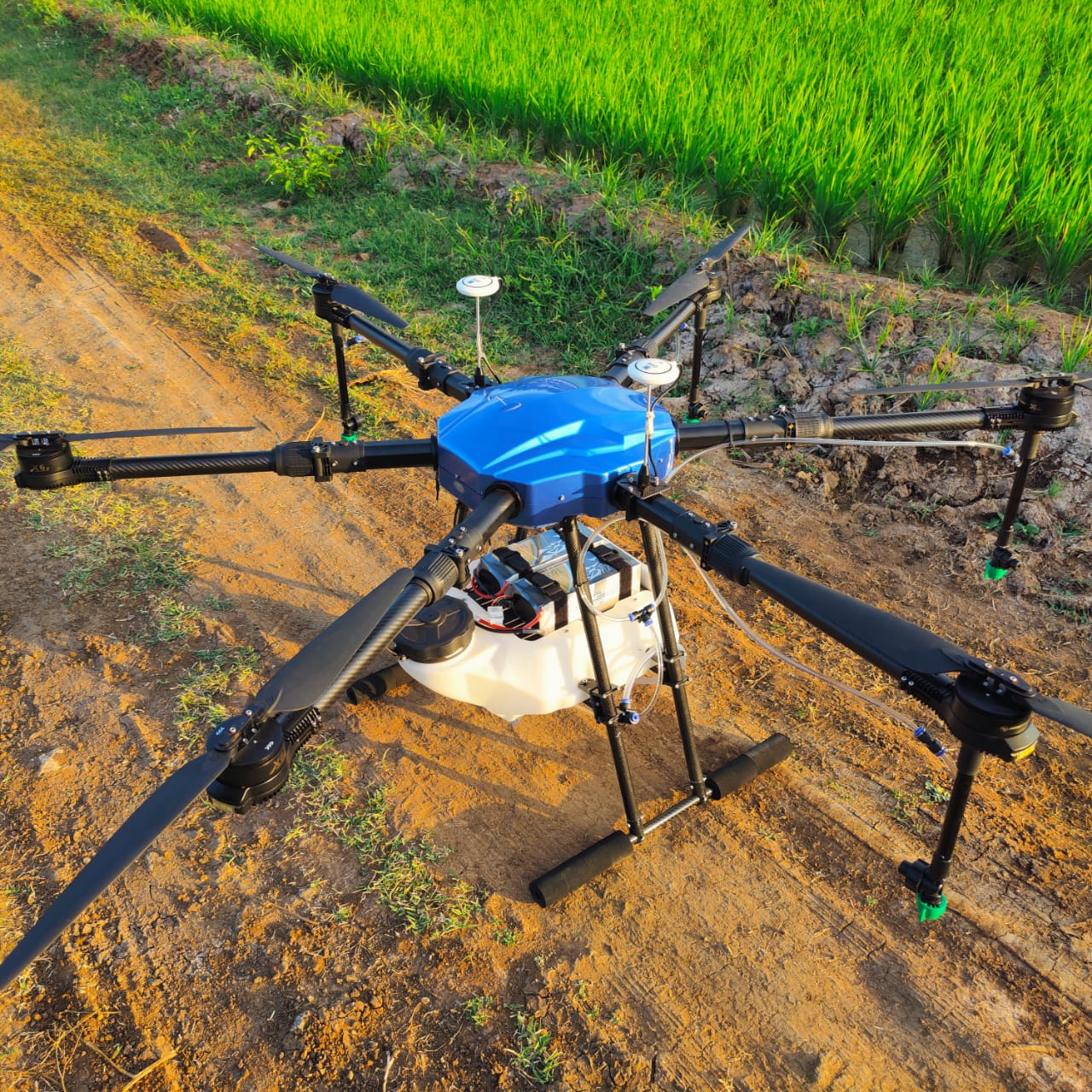
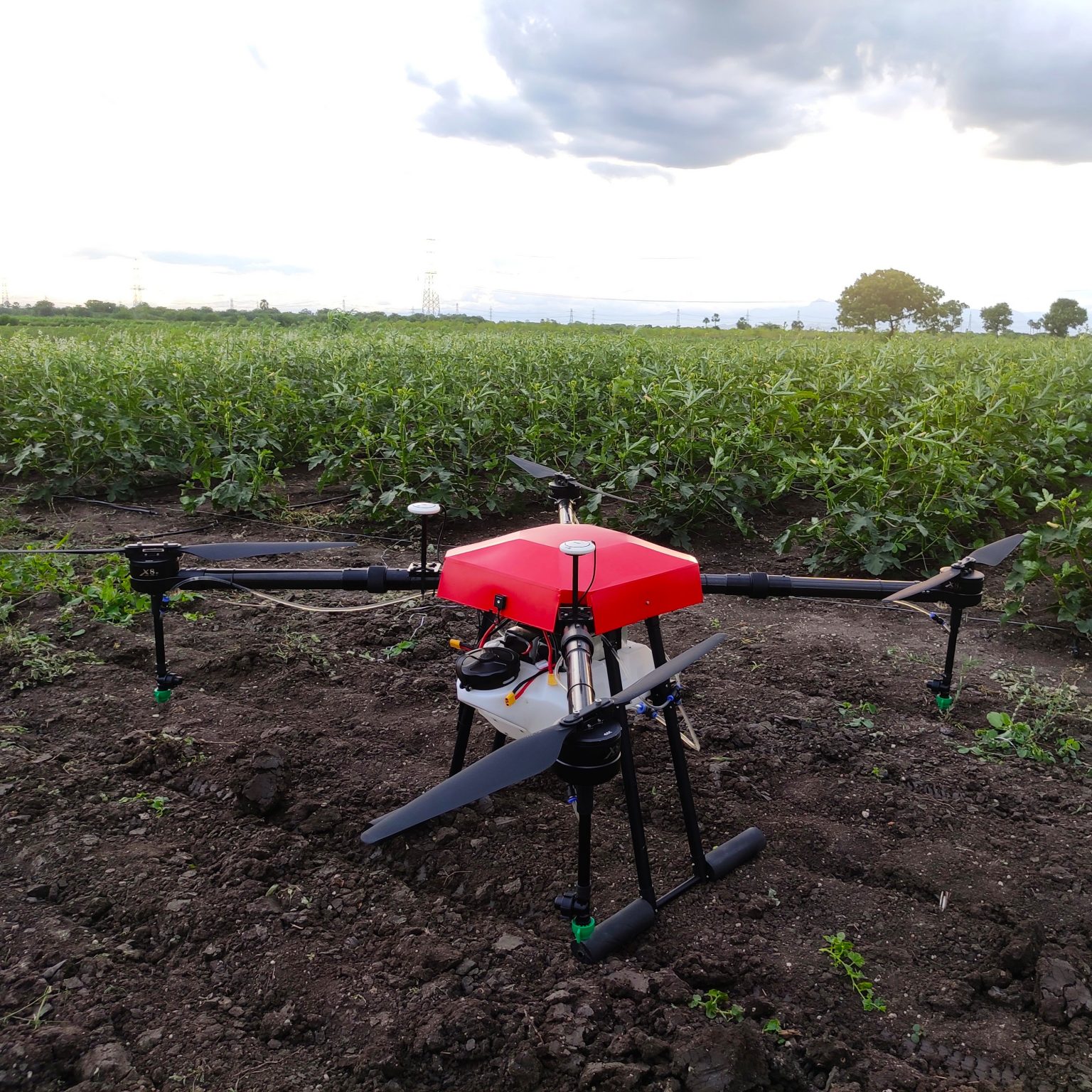
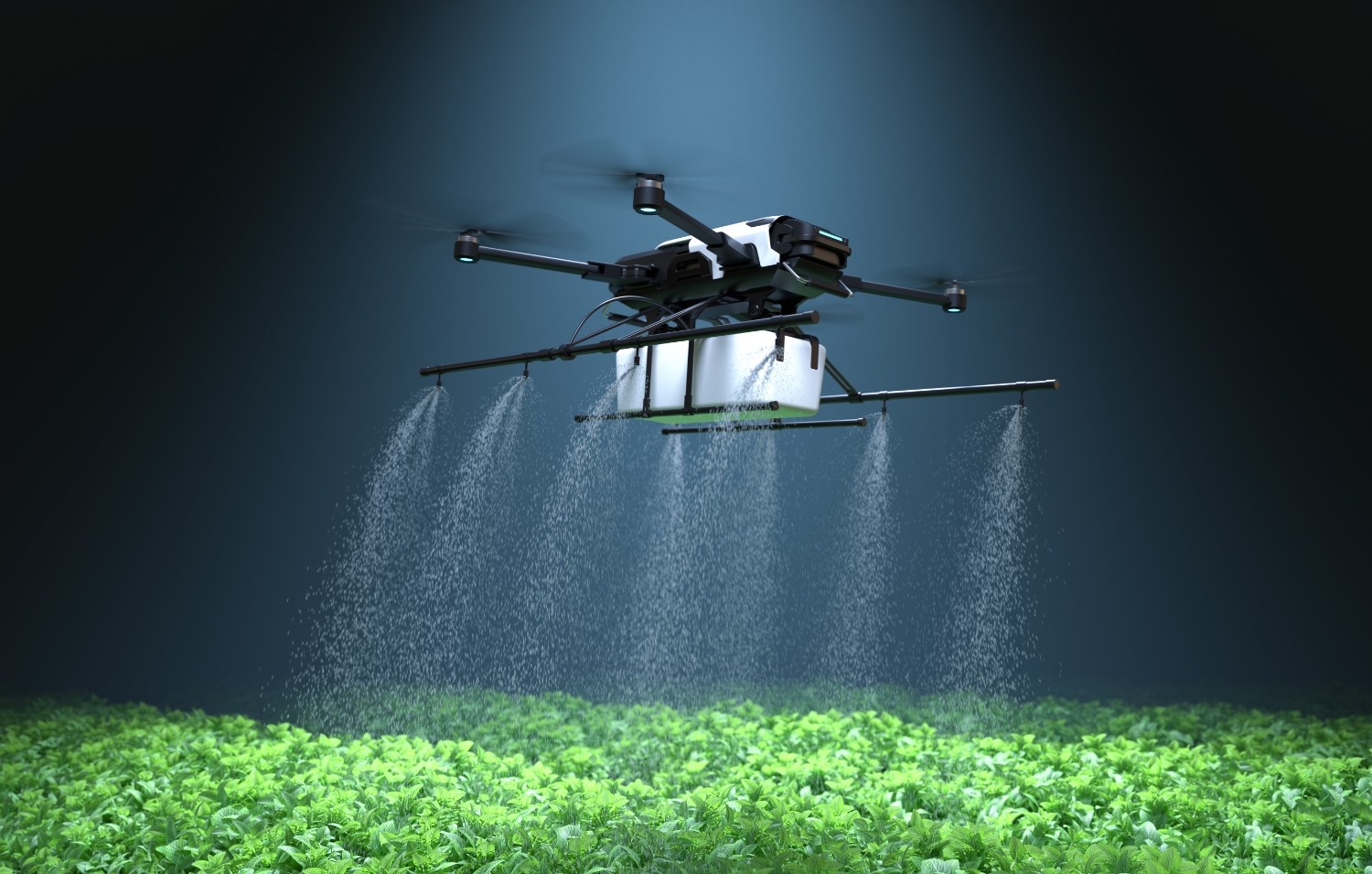
Debbie425
Very good